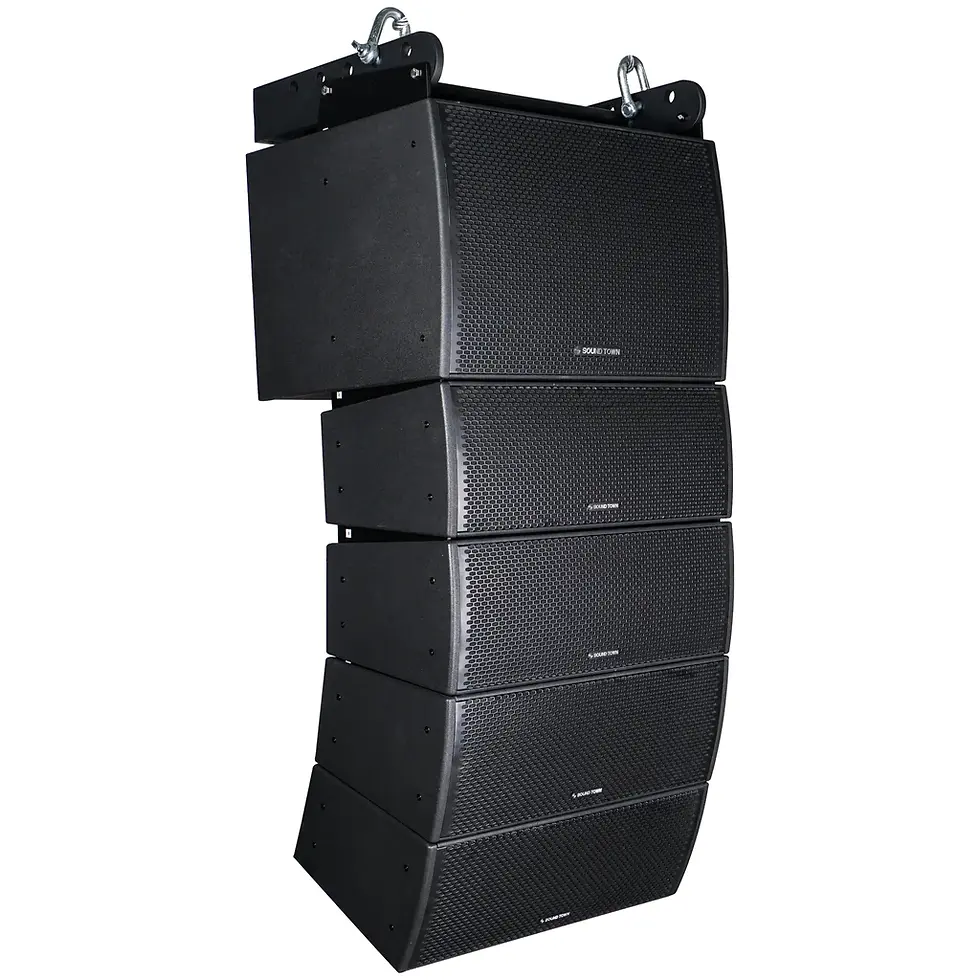In the world of professional audio, the selection of the right speaker system is crucial. The choice between point source and line array speakers can significantly affect the audio quality and coverage at your event. This blog post aims to elucidate the differences between point source and line array speakers, providing examples of each to help you make informed decisions for your audio needs.
Point Source Speakers: An Overview

What are Point Source Speakers?
Point source speakers, also known as "conventional" or "direct radiating" speakers, are the most common type of speakers. They derive their name from their ability to act as a single point of sound emission. In other words, they project sound outwards in a conical or spherical pattern.
Examples of Point Source Speakers
A classic example of a point source speaker is the QSC K12.2 Active 12" Loudspeaker. It offers high-quality sound output and is perfect for smaller venues. Another example is the Bose F1 Model 812, a flexible array loudspeaker and subwoofer that provides versatile coverage patterns.
Line Array Speakers: An Overview

What are Line Array Speakers?
Line array speakers are a series of loudspeakers that are vertically aligned in a 'line.' These speakers use the principle of constructive interference to produce a directional sound wavefront. This design allows for greater sound coverage and more control over the sound dispersion, making them ideal for large venues or outdoor events.
Examples of Line Array Speakers
One example of a line array speaker is the JBL VRX932LAP Powered Line Array Loudspeaker. This speaker is renowned for its high power, lightweight design, and unparalleled sound quality. Another example is the Bose Professional ShowMatch DeltaQ array loudspeakers, known for their versatility and adaptability in various venue sizes.
Comparing Point Source and Line Array Speakers
Sound Coverage
Point source speakers emit sound in a more or less spherical pattern, making them ideal for smaller venues or situations where the audience is close to the speaker. On the other hand, line array speakers produce a more focused sound dispersion, making them suitable for large venues and outdoor events where the sound needs to travel a greater distance.
Setup and Configuration
Point source speakers are generally easy to set up and require less configuration. However, line array speakers, while offering more control over sound dispersion, require careful setup and configuration to maximize their benefits.
Cost
Point source speakers tend to be less expensive than line array speakers due to their simpler design and construction. Line array speakers, with their advanced technology and superior sound coverage, are generally more costly.
Conclusion
Both point source and line array speakers have their unique advantages and are suited to different situations. Point source speakers offer simplicity and cost-effectiveness, making them ideal for smaller venues. In contrast, line array speakers provide superior sound coverage and control, making them the go-to choice for large venues or outdoor events. Understanding the distinction between these two types of speakers and their respective strengths can greatly enhance your event's audio experience.

Comments